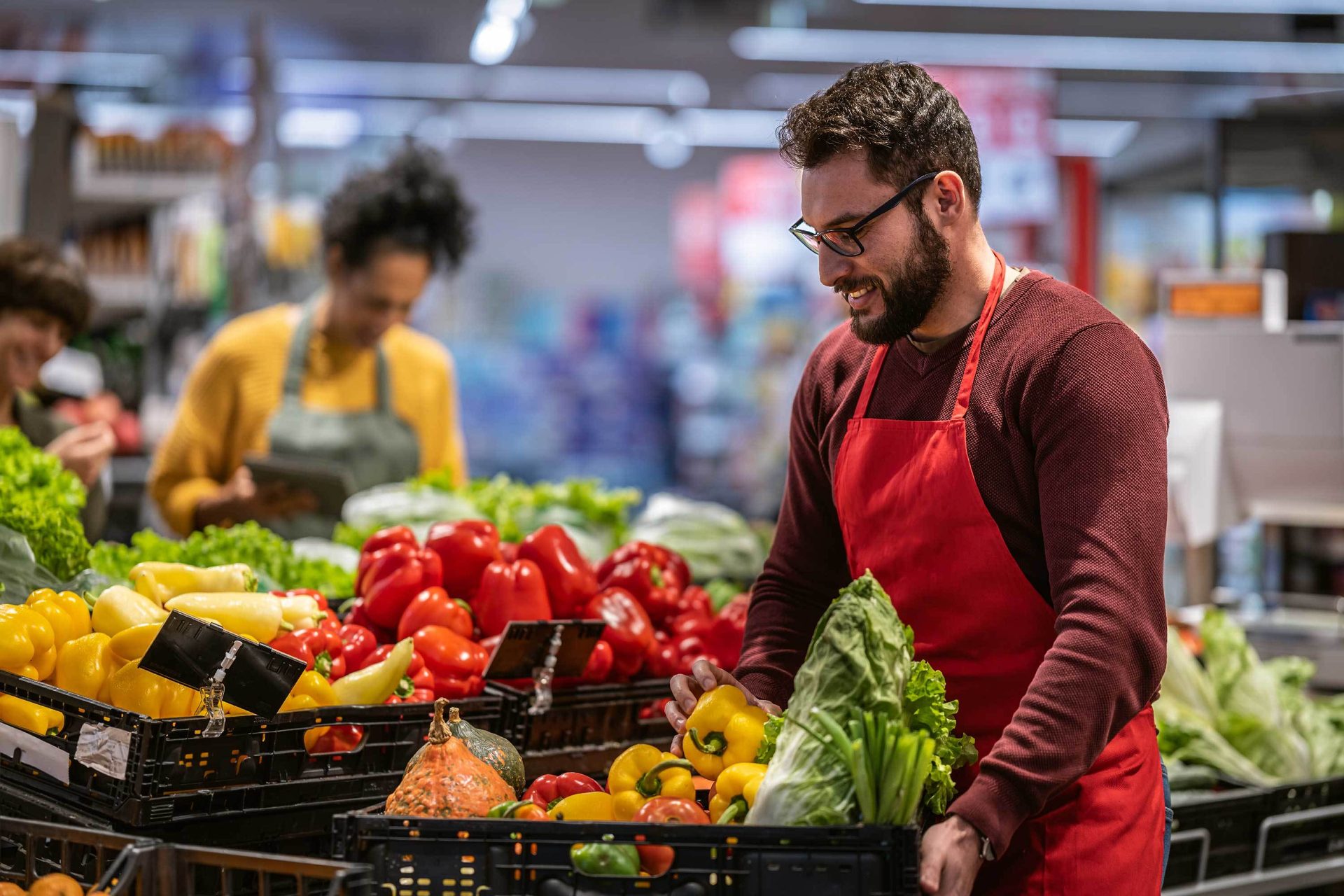ADVERTORIAL
Killing Foodborne Pathogens with Artificial Intelligence and Internet of Things
With controllable ozone in our grasp, food processors now have a safe and sustainable way to ensure the delivery of fresh produce
By Dr. Bob Banerjee, Epic iO
The food industry treats fresh produce for pathogens and food spoilage microbes during harvesting and packaging, but it has traditionally relied solely on refrigeration to control the levels of microbes once the produce is on its way to consumers. Pathogens (like E. coli or Listeria), viruses, or molds sometimes cause illness, and others reduce the shelf life of produce. However, refrigeration does not kill pathogens; it simply slows down the rate at which they multiply. In many scenarios where shipping takes days or weeks (bringing fruit from Chile to the eastern U.S., for example), even slow microbial growth is undesirable.
Recently, artificial intelligence (AI) and the Internet of Things (IoT) have been used to harness the power of ozone gas, which has garnered renewed interest as a way to kill (not simply retard) these harmful microorganisms. In this article, we will look at AI, IoT, and ozone as a combined solution to the challenge of protecting fresh produce from pathogens.
The Pathogen Challenge
In food processing, there is a "kill step"—the last opportunity prior to packaging, where processors can apply antimicrobial disinfectants such as fungicides, bactericides, virucides, etc. The kill step is not 100 percent effective, however. To be 100 percent effective, the disinfectants would need to be so potent that they would damage the product or render it unsafe for consumption. The window for the kill step is also short—typically just seconds on a production line.
So, some pathogens remain even as produce is crated for transport. Once produce is boxed, the strategy has been to keep it refrigerated, hoping this will slow down pathogen spread. While refrigeration does indeed slow the growth of pathogens, however, it doesn't kill them, and this becomes evident on long journeys.
It is worth noting that with increasing pressure for non-chemical alternatives—especially with the rise of organic fresh produce—germicidal ultraviolet-C (UVC) light has been used as a biocide. UVC has been used in some food processing applications, but the challenge is getting it to directly expose every surface of the food. UVC kills only by direct exposure, and anything that lurks in the shadows, such as bacteria in the tiny crevices of melons, persists.

Image credit: Mr Vito/E+ via Getty Images
KILLING PATHOGENS IN COLD STORAGE
Liquid biocides cannot be used on packaged produce, but in gaseous form they can destroy pathogens on produce, whether in cold storage or not. For example, ozone gas is a decontaminating agent that is more powerful than other disinfectants such as chlorine. In high concentrations (in the tens of parts per million, or ppm), it is harmful to humans and other living things. OSHA's safe limit for ozone concentration is 0.1 ppm.
Historically, ozone has been difficult to control and manage. Despite these challenges, ozone gas was USDA approved for meat storage in 1957, FDA approved for use in bottled water disinfection in 1982, and FDA approved for food processing in 1997.
By 1997, however, ozone was still considered too expensive to generate and too difficult to control for mainstream produce applications. In the interim, this has changed from a hardware challenge to a software one. It is now a trivial matter to generate ozone gas (consumer generators can be purchased for $50), but the big challenge is controlling it.Without a sensor to evaluate the air in a space, anyone using these generators is flying blind.
As with medicine, the effectiveness of ozone in destroying microbes is based on the dose applied. Too much ozone produces unwanted side effects; too little, and it fails to kill the pathogens. The key to success is knowing what dose is needed for a given situation, and knowing whether that dose has been accurately delivered.
An ozone disinfection dose is defined as the concentration multiplied by the exposure time. For example, 12 ppm for 400 minutes is a dose of 4,400 ppm-minutes. In the real world, the concentration fluctuates, and it can be impossible to know how much was delivered. If we were at 30 ppm, then we overdosed with 12,000 ppm-minutes; if we only reached 0.25 ppm, then we only delivered 100. If the actual delivered dose is unknown, the level of microbial destruction cannot be predicted. This is precisely why, until now, the power of gaseous ozone has been impossible to harness. The other challenge with not being able to monitor and throttle the ozone concentration is that it can rise too high and not only damage the produce, but also cause injury to people when they return to the room.
To effectively control ozone, you must maintain a specific concentration for a given amount of time. To be safe and not hurt produce, that level has to be low—as close to the OSHA level of 0.1 ppm as possible, but high enough to be effective. There is a massive body of research showing the efficacy of different concentrations and exposure times. If the right level can be maintained precisely for days, weeks, or even months while the produce is in cold storage or in refrigerated transport, then the pathogenic microbial load can be continually reduced every day, long after the kill step.
Disinfection Meets AI and the IoT
It seems unlikely, but effective yet environmentally sustainable disinfection has been transformed by advances in AI and the IoT. It is now possible to inject and precisely sustain ozone concentrations (to within 0.1 ppm) for produce incold storage and transport for any period of time—it requires only electricity. The software senses the minute changes in the ozone level as the disinfecting atmosphere reacts with microbes on surfaces, and ultimately decays back into pure oxygen. The AI uses sensor data to read the room's changing signature and every second compares what it is seeing against what it has previously learned to be an already-disinfected version of the room. It is analogous to a bat flying in the dark using sonar to read the cave: based on what comes back, it knows exactly what it needs to do next.
The concept of combining cutting-edge AI and IoT and applying it to the biosecurity challenge of improving food safety, as well as food spoilage, has been realized in one solution: a briefcase-sized unit that sits inside a cold storage room or transport container. It inactivates and inhibits pathogens, achieving lower levels for much longer periods of time than were previously possible by refrigeration alone.
The consequences for fresh produce are dramatic. It is a given that this solution reduces the incidence of foodborne illnesses and extends shelf life, but it also avoids the use of harsh chemicals that negatively impact the product, consumers, and the environment. Finally, by being a purely electric solution and supportable through solar power, it extends these capabilities to the farmers, food processors, and transporters in remote parts of the world where chemicals are not only expensive, but also hard to come by.
With intelligent disinfection technology in our grasp, food processors now have a safe, sure, and sustainable way to ensure the delivery of fresh and wholesome produce to any part of the world.
Bob Banerjee, Ph.D. is Vice President of Products at EPIC IO. "Dr. Bob" has held a wide range of global product management and product marketing positions in Europe and North America, touching a variety of industries including IoT, physical security, critical infrastructure, transportation, and higher education. He is a frequent speaker and has written many articles on behalf of Bosch USA, NICE Ltd., @Axeda, Nortel Networks, Ex Libris, and others. Bob is known for making complex things simple to understand, making him a trusted advisor throughout his three-decade career. He received a Ph.D. in Artificial Intelligence from the Advanced Research Center at the University of Bristol in the UK.

